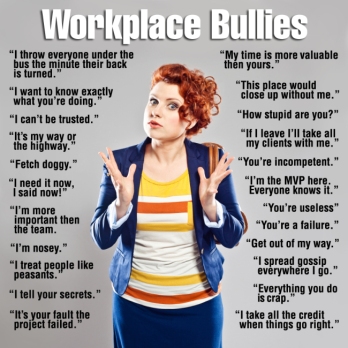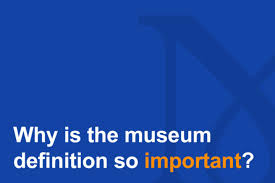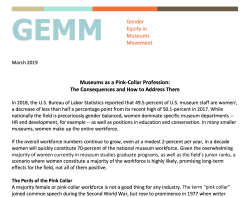Make Employee Performance Reviews Intentional Opportunities, Not Tests
Posted: February 17, 2020 Filed under: Human Resources, Mentoring, Museum, Nonprofit Leadership, Workplace Values | Tags: Leadership, museums, nonprofit, transparency Leave a comment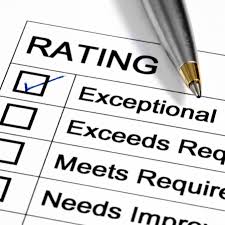
It’s February. In the academic world, where I work, spring break looms in the distance like Oz. But before it arrives, there are annual performance reviews. Like much in life, performance reviews deliver more when you invest more. Sadly, though, in the imperfect world of the museum workplace the whole experience has all the appeal of a root canal. An overburdened leader with too little time on her hands needs to press pause long enough to meet with her staff or team individually, while cramming their jobs and personalities into a form designed in HR for one-size-fits-all. That’s the leader’s side. From the staff point of view, it may be a once-a-year conversation with a boss they don’t know very well that’s eerily reminiscent of their job interview, except there’s always the hint that the whole conversation is like a principal’s office visit, and whatever happens is GOING IN YOUR PERMANENT RECORD. The result is an experience, visited on us annually like a virus, potentially fraught with tension and the desire to have it over, where the highlight is often checking the box.
Apologies if that sounds hugely negative. Maybe you work in a museum or heritage site where annual performance reviews are one in a series of ongoing conversations with your director or team leader. Maybe they’re full of laughter, encouragement, and questions like, “What was your best moment at work this year?” Sadly, that has not been my experience. For seven years I had an increasingly toxic relationship with my then-leader. He failed to treat me equitably in a 36-month period of bullying by a colleague, leaving me at best cautious and at worst mistrusting. Over time, we whittled the required annual review down to the briefest exchange. It was totally pro-forma and completely unhelpful.
That said, I remain hopeful. I still believe performance reviews are opportunities not tests, and, like much in leadership, they should be intentional acts. But maybe you lead an organization that doesn’t have performance reviews. Maybe after decades of not meeting with staff on an annual basis you’re not sure what the fuss is about. You get along fine. And you may. It’s likely, though, even without the review’s structure and forms, you must make decisions regarding promotions, title changes, and pay. An annual performance review process, when done well, takes the sting of subjectivity and randomness out of the process by asking for employee participation.
Successful reviews start by touching base with mission and clarifying goals with your departments, teams or, in the case of a small organization, the whole staff. Measure team performance overall. Were their 2019 goals met? If not, why not? Once group reviews are complete, individual reviews make more sense. If you’re the overall leader, ask your leadership team about their departments. Who were the standouts? What does good, better, best look like on their teams?
From your leadership meetings, you can move on to individual reviews. You are neither a psychologist nor a wizard, so focus on the work. Ask them to describe a great day at your museum. Ask them if they could have a do-over, what experience comes to mind? Ask what they’d like to do more of? Less of? Ask how often they collaborate and with whom? Ask whether they feel safe, seen and supported, and if not, why not? Point the conversation back toward mission. How can their good work and great skills, continue to push the museum forward?
Ideally, were we not all overworked and struggling with too little time in the day, performance reviews wouldn’t be a one-time meeting akin to our annual physical. They would, instead, be a capstone to a series of ongoing conversations. I can feel the eye rolling here. Who has time for that? Likely you could, though, and if it improves communication, builds trust, and creates a better more transparent museum workplace, what’s not to like?
Remember:
- Annual reviews are not productive if they are used to catalogue an employee’s failings. Start positive and move forward.
- Our memories are fallible and subjective. If you supervise a leadership team, ask them to keep a journal with a few key performance episodes for team members.
- Make sure each staff understand their connection to the overall museum operation and mission.
- Ask questions that get at the heart of what they’re doing. What works well? What doesn’t?
- Check your bias–both implicit or explicit–at the door. Imagine how you’d feel if you started your museum day cleaning the restrooms or dealing with toddlers from the local pre-school. Be respectful because your entire staff is important.
Performance reviews are something that seem to matter more in the for-profit world where achievement results in bonuses, raises and advancement. In the museum/heritage organization world, where jobs are tight and pay often abysmal, reviews sometimes feel as though they don’t have a larger purpose either for employee or employer. Yet we blather on about the importance of mentoring, of networking, of having a career plan, of speaking at conferences. And yet what are performance reviews but the 2.0 of mentoring? They are the opportunity to support staff, to point them in the direction of colleagues and opportunities, to invest in them. And, as we’ve said so many times in this space, your staff is the heart of your organization. Pay it forward. Hopefully, your gifts will come back tenfold.
Joan Baldwin
If You Don’t Close the Museum Salary Gap, You Perpetuate It
Posted: February 10, 2020 Filed under: Museum, museum career, museum salaries, Museum wages, Nonprofit Leadership, Organizational Values, pay equity, Workplace Values | Tags: Leadership, museums, nonprofit, transparency 6 Comments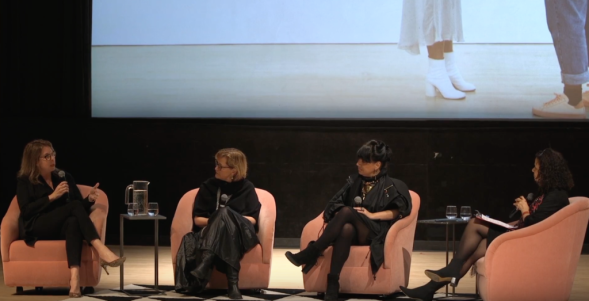
On February 6th, Kaywin Feldman, Director of the National Gallery of Art, was called out on Twitter when she said, “So I’m concerned about getting more men in our field.” Charlotte Burns (@charlieburns) couldn’t understand why one of the only women in the art museum world’s top ten leadership positions would suggest hiring men as a solution to the field’s salary issues. The answer is pink collar jobs, meaning those dominated by women, are those jobs where salaries do, in fact, escalate when men enter them. According to the Bureau of Labor Statistics, 49.5-percent of museum employees are women. And while Feldman’s remark seems counterintuitive, she’s correct. In fact, to bastardize Jane Austen, it’s a truth universally acknowledged that a single man entering a job sector dominated by females will be paid more and promoted faster than his female colleagues.
Why does this matter? First, a huge thank you to Feldman and her colleagues, Nathalie Bondil from the Montreal Museum of Fine Arts, and Anne Pasternak from the Brooklyn Museum, who spent February 4th in a sold-out discussion at the Brooklyn Museum titled “Women Leaders in the Arts.” There’s precious little time devoted to museum leadership as it is–and female leadership is rarely talked about except when it’s absent– so kudos to the Brooklyn Museum for hosting the event. But back to Feldman’s remark and working in a pink collar field. The museum field is trending toward pink collar. As a result, many of us have terrible salaries. That said, hiring men is the most common recipe for increasing pay.
What was missing from Feldman’s remarks was the fact that a small percentage of men in a pink collar field, don’t change anything. It takes decades and many more men before salaries go up overall. And guess what? Even then, there’s a gender pay gap because introducing men into a predominantly female ecosystem only accelerates the existing pay gap, something that’s been with us since the 1940s when women began to enter the museum field in significant numbers for the first time. Museum work, like many of the soft-skilled caring professions, paid less than manufacturing, business and science, but many women were new to the workforce, and frankly, just happy to be there. Unfortunately, starting behind keeps you behind and women never, ever caught up.
Women are also penalized because many take a career break for pregnancy, childcare, and/or care of a family member. According to the National Women’s Law Center (NWLC) working mothers make about 71¢ to a working father’s dollar, resulting in a loss of about $16,000 in earnings every year. (That’s white mothers though, the parenting pay gap is greater for women of color.) This parent gap exists in every state, and sadly, it doesn’t disappear when the kids leave, it stays with women until retirement, just like the gender pay gap we will hear about March 31, 2020, when white women’s pay reaches parity with white men’s. Women of color won’t reach parity until August 13th, Native women, October 1st, and Latina women November 2nd. How’s that for shocking and infuriating?
So kudos to all of you who have the salary question on your board’s agenda for 2020, but remember, no matter how generous your raises, if you don’t close the gap, you perpetuate it. So, instead….
If you’re a museum service organization or funder: Ask members sharing salary data to report on their pay gap, and be willing and ready to share pay data, including the gap, with prospective employees moving to your area.
If you’re a museum or heritage organization leader: If you currently ban employees from talking about wages, consider lifting it so staff can know what they don’t know. Think about a wage audit, disclosing the results to staff, and working to rectify them over a period of time. Work to eliminate bias in hiring and in promotion. Men, for example, are often rewarded monetarily when they become parents; men are also promoted on who they might become rather than on current performance.
If you’re a woman employee: Know what the field, particularly the museum and heritage field in your region, pays. Do your homework. Know what amount seems like pay Nirvana, and what amount is worth saying “Thank you, no.” Educate yourself on how much it will cost to live where you’re interviewing. (There are a number of Living Wage Calculators to help with this.) Always negotiate, and don’t let being over 50, when women’s wages really tank, or being under 30 when the wage gap is smallest, stop you. Need tips? Try AAUW’s Career & Workplace and Salary Negotiation workshop page or Gender Equity in Museums 5 Things You Need to Know.
Pay fairness is a moral issue. In the 1980s and 90s when women entered the job market in large numbers, it was possible to say, “She doesn’t have the experience, she’s not as educated, she’s not supporting a family,” or any number of out-dated and outmoded ideas. But that’s over. Fifty years ago, 58-percent of college students were men; today 56-percent are women. One in four women are raising children on their own; and 12-percent of working adults are also caring for another adult.
Your staff is the lifeblood of your organization. And a staff that’s equitably paid is a happy staff, and happy staffs deliver. They’re creative, empathetic, fun to work with, and great community ambassadors. Invest in them, and do it fairly.
Joan Baldwin
P.S. This was also the week that London’s Tate advertised for a head barista at a salary higher than the average curator. Cold comfort to know that we’re paid badly on both sides of the pond.
Image: Artnet News, February 5, 2020
4 Workplace Pledges Worth Making (and Keeping) in 2020
Posted: January 6, 2020 Filed under: gender equity, Leadership Development, Museum, Nonprofit Leadership, Workplace Values | Tags: kindness, Leadership, museums, nonprofit 1 Comment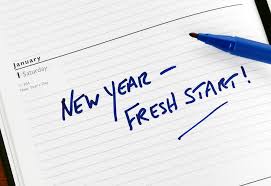
To begin, we want to thank everyone who reads and supports Leadership Matters. Since 2013, it’s grown from 823 views in 26 countries to 63,523 views in 186 countries last year. It’s an honor to write for you, to meet you at conferences, and to hear from you, and we wish you all the best for 2020 and the decade to come.
Before the holidays we asked for your hopes and wishes for the museum world this year. We weren’t overwhelmed with responses, but we did receive these two awesome wishes.
- I wish for sustainability and everything that entails—a society that values culture, institutions and human diversity, wages and benefits that reflect the training and experience held [by] my museum workers, and safe and equitable work spaces. Kristy Griffin-Smith
- Challenging systemic biases that are so ingrained we often can’t see their true impact. Karen Mason-Bennett
No surprise, we have some wishes of our own. Some echo the two above, a few don’t.
- We wish museums and heritage organizations could collectively acknowledge climate change as a key issue for global museum life in the next decade. As the University of Manchester wrote in 2018, “Museums represent key sites for climate change education, engagement, action and research. There are over 55,000 museums worldwide. They represent an existing infrastructure. Many museums are already connecting their work with climate change education, research and management.” Like many issues that “feel” political, this is not one you should ignore in the hopes others–perhaps bigger, better-funded museums–will do something about it. This problem belongs to us all, and if we don’t collectively own it, we can’t possibly help remedy it. From the way you ask visitors to dispose of trash, to decisions regarding capital improvements, to the context you offer around historical and scientific questions, museums have a climate change role. Like so many issues, not playing a part in this one is, in fact, taking a side. Don’t be neutral. If you feel you don’t know enough, assemble a team of advisors. After all, if 17-year old Greta Thunberg can be an international climate change activist, you can probably create a plan–beginning with small, sustainable changes– for your museum or heritage organization.
- We want museums to acknowledge the ways they disadvantage various demographics. You may believe decolonization is a word for big-city museums. It’s not. Instead, consider it as hierarchical, outmoded thinking, privileging one group over another in explicit and implicit ways. For some of us it’s habit, a habit we hope museums will work to break in the coming year, maybe by experimenting– only exhibiting work by women or women of color or by sending the organization’s youngest staff to conferences instead of its older team leaders or by changing traditional label narratives or, frankly, the labels themselves. Do it until what is outside the box feels normal and every day. Don’t get me wrong: Museums need people of privilege. They are generous, many to a fault. But museums can’t act as though a white, predominantly male, narrative is the only one of importance, and everybody else is other than. So make 2020 the year you shake things up.
- Women are now 50-percent of the museum workforce in the United States. Women’s problems are human problems, and it is not a woman’s job to solve them. (Believe me, if that were possible, it would have happened ages ago.) Our wish? That in 2020 museums and heritage organizations, led and supported by their service organizations, will end the museum field’s gender pay gap, and pledge to stop sexual harassment in the museum workplace. (You can do your part by signing GEMM’s Pledge now.)
- Leadership matters. No kidding. A lot. We wish museums, heritage organizations graduate programs, and boards of trustees would recognize leadership is a key ingredient in creating strong, sustainable organizations. We understand many museums, particularly larger ones, need recruitment firms, but the museum hires the recruiters, not the other way around. Are you comfortable with firms who tell female candidates what to wear, but not male ones? Are you comfortable with firms who preselect based on their vision of what your museum should be? Whether you’re a board member or a museum leader, don’t leave hiring decisions to others who may not understand your organization’s DNA. And remember, boards with the courage to step outside the white male box, hiring people of color and LGBTQ candidates to fill the top spot, change more than the director’s position. They show their communities what community means.
The new year is a time we all pledge to be better humans, change our habits, exercise more, eat healthier, meditate. A week ago, we published the top Leadership Matters posts since 2013. Sadly, the one that garnered the most views was “The Silent Treatment (and What to Do About It,” followed closely by “Workplace Bullies.”What does that say about the museum workplace? So among all your other behavior changes for 2020, let’s make this a year of kindness. If you’re a leader, remember what it was like when you worked for an ogre, and be someone different. If you’re a follower, be the person you wish your leader were–or, if you’re lucky–the person your leader is. Bottom line: exercise a little kindness to each other, our communities, our planet.
Joan Baldwin
10 Tips for More Productive Meetings
Posted: November 4, 2019 Filed under: Leading Across Organizations, Museum, Nonprofit Leadership, Work Habits | Tags: Leadership, museums, nonprofit 2 Comments
My program is searching for a director. As a result, we are currently led by an interim with many other responsibilities. That could have been an awful choice, but we’ve actually benefitted. Here’s why: He’s so busy his time with us must be efficiently managed. As a result, we have suddenly emerged from the meandering, Seinfeldian, nothingness of our former meetings to gatherings that are very focused and blissfully short.
According to the Harvard Business Review for-profit leaders spend up to 23 hours a week in meetings. How horrific is that?And when does anyone get any actual work done? Leadership Matters speaks frequently about the need for diverse voices around the staff table, for equitable discussion, for differing points of view, but how are your meetings discussions? Or are they simply audio book versions of someone’s to-do list?
We all want a better museum workplace, so here are Leadership Matters‘ 10 tips for better meetings:
- Know who needs to be in the room. Just because there are five or 10 people on your leadership team, does everyone need to meet every week?
- And speaking of weekly meetings, do you need them or does your meeting schedule date to some time before email? Consider experimenting with your meeting schedule.
- Make sure your meetings point forward not backward. Meetings are not an opportunity to rehash the week in minute detail. Looking back is helpful if you’re tweaking something to move forward.
- Agendas are like mini-strategic plans. The people around the table should know why they’re there and where they are going. That means crafting your agenda carefully.
- Meetings are not a stage. If leaders (or anyone else) hog the floor, staff cease to speak up. It’s that simple. And you end up talking to yourself.
- Meetings are an opportunity to be fully present. Unless someone on your museum staff is secretly hiding their career as a high-powered surgeon, there is likely no reason they can’t live without their phone for 40 to 60 minutes. Put a basket in the middle of the table or ask staff to turn their phones off and place them face down.
- Start and end on time. Be respectful of your staff’s time and their other obligations, and stick to the allotted time table. If you’re presenting anything that involves IT, for the love of God, set it up ahead of time and test it. No one wants to wait while you experiment with something that’s not working.
- Don’t expect staff to be creative just because you ask. If you want your colleagues to focus on a particular question or problem during a meeting, use a flipped classroom approach and send them whatever materials they need to prepare ahead of time.
- Staff isn’t family. I know there is a school of thought that says colleagues should be like family, but be mindful that’s not a sentiment shared by all staff. Birthdays and holidays or what staff did over vacation are probably better left in the break room.
- Learn to listen. If you’re a leader, you spend a lot of your workweek in your own head, thinking, questioning, moving organizational puzzle pieces around. You also likely move at a frantic pace. Use your meetings to touch base with colleagues. Listen to what they have to say. Don’t ask empty questions. Ask real ones. Listen to the answers, and welcome push back. At the end of the day, you all serve the same organization, and you all want it to be the best it can be.
Yours from meeting heaven,
Joan Baldwin
Feeling Undervalued at Work? These Tips Will Help You Rebalance
Posted: October 28, 2019 Filed under: Leading Across Organizations, Museum, museum staff, Nonprofit Leadership, Work Habits, Workplace Values | Tags: Leadership, museums, nonprofit Leave a comment
This week I spent time with a consultant. She’s visited us before so we know her well. She’s wise and kind, but also direct. Her role is to provide us with a programatic review in preparation for hiring a new director in 2020. At one level it has a Fiddler on the Roof quality–you know, “Matchmaker, matchmaker make me a match, find me a find, catch me a catch–” but as with any possible hire, there’s a lot of behind-the-scenes preparation too.
Part of that work is to make sure we understand our job descriptions, and how they co-join, creating a strong program. In our conversation she pointed out something so simple I can’t believe I never thought about it. First, she said our job descriptions were empty, anemic things. Then she asked whether we felt valued. We hemmed and hawed, answering sort of and maybe. Bear in mind, there were only three of us in the room. We’re the happiest team members: we love our work; we work well together; we get stuff done, and yet, we struggled with this question. Then she tied the two ideas together, suggesting the former — our bland and formulaic job descriptions, coupled with a general miasma of misunderstanding over what we do and what we’re capable of — left us under-valued. Fortunately, we’re self-directed, confident, and like I said, happy, so the question of value hasn’t been a huge issue, and yet, once she drew our attention to it, it’s hard to un-see.
So all of you out there in museum land: What about your sense of value and self-worth? Who tells you you’re doing a good job? And when was the last time you read your job description? Was it just before your potentially useless annual review when you tried to figure out how far you strayed from the way your position was originally advertised?
As a leader you report to someone higher up even if it’s your board, and you certainly have people reporting to you. If you feel valued, and value those working for and with you, stop reading. If you’re not sure, before you eye roll and say something about leaders are not counselors and your employees’ self worth is their problem, think about this: hiring costs money as does training. People need value and meaning in their lives, and if they can’t find it in your museum, there may be a larger problem.
So if you’re a museum leader, consider the following:
- Make sure your goals and expectations are clear: Write them down and rank them. That way employees, especially front-line employees who are the museum’s public face, don’t have to choose between competing expectations.
- Build a culture that acknowledges good work: sometimes it’s a simple thank you; another day it’s cider doughnuts for the team; or maybe the salaried staff takes the hourly staff’s jobs for an afternoon for work well done. Find your own way to say what your staff does matters.
- Increase staff visibility: When you have the opportunity, toot your team’s horn. Talk about what they do and why it has value. And make sure everyone’s contribution is acknowledged at the completion of an exhibit, program or campaign.
- Consider what you can do: Workplace wellness is one of the top concerns cited in Mercer’s 2018 Global Talent Trends survey of for-profit businesses, not to mention the numerous articles and posts in museum-related publications. Think about instituting an on-site health screening, a wellness challenge, or a paid hour a week of wellness time for employees to use. If museum leadership puts wellness on the table, that permits everyone to be concerned. Working a 12-hour day isn’t an option because–oh, you’re valued–and you need time away to re-charge and re-group.
And if you’re a staff member who’s under-appreciated:
- Talk to your boss. Does she know what you’re doing outside the lines of your job description? Bring your list of recent accomplishments. Does your job description need editing based on what you’re doing?
- This isn’t kindergarten and getting a gold star won’t give your work meaning. That comes from you. Carve out time for personal reflection, daily or weekly or even monthly. What went well? What gave you satisfaction? Pat yourself on the back when you get a win.
- Are your skills wasted? Is there a gap between your job description and your talents? If yes, talk to your boss. Maybe it’s time to alter your job description.
- And if not, know when it’s time to move on. People who love their work and their job, find meaning and value in what they do almost every day. There are a billion reasons to tell yourself you can’t change jobs. Do you tell yourself you should quit, but somehow looking for another job always moves to the bottom of the list? Figure out why, and then move toward something new and better.
In a few weeks it will be Thanksgiving when we gather with friends and family to say a collective thank you. Don’t wait ’til then. In fact, don’t wait. Tell your colleagues, your staff, and your board when they matter. Let them know they’re valued. Who knows maybe next time they’ll return the favor?
Joan Baldwin
10 Leadership Reflections from 30,000 Feet
Posted: September 30, 2019 Filed under: Leadership Development, Museum, Nonprofit Leadership, Self-Aware, Work/life balance | Tags: empathy, nonprofit, soft skills Leave a comment
I don’t know about you, but when I am besieged with obligations, meetings, and deadlines, I make lists. Over time the lists become a bit of a joke because things that weren’t accomplished one week don’t always move forward to the next. Instead they occupy a sort of list purgatory, haunting me as I go about my days. You may have a better way of organizing things. Your lists may be digital. Perhaps you’re more efficient, but however you make your way through your tasks, there is always a certain satisfaction in the strike-through, marking something as done, finished, complete, and off your plate for a while.
But then, and maybe this doesn’t happen to you, there is another sort of list. It’s the list from 30,000 feet. It’s always with me, a reminder of ways of being, things I need to focus on, ways I need to be more intentional. This week Anne Ackerson and I read papers from our Johns Hopkins University students regarding leadership at museums, zoos, and heritage organizations undergoing challenge and change. As I read them–many discuss museums that have been in the news for one thing or another–I am struck again, by how complex leadership is, how many moving parts there are, and how important it is that the personal integrate with the organizational.
As I’ve said here about a million times, reflection in leadership is key. So in that spirt, here are 10 things on my 30,000-foot leadership list for this fall.
- Remembering to pause: whether it’s going outside for 15 minutes for a walk; sitting with a non-work friend over coffee; laughing. Life isn’t all work.
- Understanding my organization’s origin story: Acknowledging the work, gifts, and goals of those who came before me, while moving forward in a world that’s changed and changing, and creating a way to make the two work together.
- Listening: Spending part of every day, not waiting to speak, but actually listening.
- Remembering not to judge: Trying to make my go-to be to understand, to empathize, and to be present rather than to judge.
- Acknowledging accomplishments: You’ve all probably read about Anne’s accomplishment jar. I am thinking about creating a team accomplishment jar where our program can acknowledge its best moments over the course of the year. Some times it does take a village.
- Making my observations my obligation: Standing up for injustice, for inequity, for the minor–the constant interrupter in staff meetings who rides herd over more reserved colleagues–to the major–the colleague who’s bullied or harassed.
- Looking for the through-lines, whether in history, race, gender, environment and class: I work with a collection created by white men in a different age, for a different age. I need to re-center, educate, and through acquisition bring community and collection into alignment.
- Give back to the field: In many ways I’ve been very, very lucky. I’ve managed to make a living, to use my imagination, to work in beautiful places, surrounded by interesting collections. I must always give back, pay it forward, and help those following behind.
- Make sure everyone’s at the table: From the board to the front-line staff, make sure we represent our communities. And then do my best to make sure all voices are heard equitably, whether in an exhibition or a staff meeting.
- Values permeate the workplace too: While values are important in the front of the house–see #7–they are also important in our workspaces. Leaders content to ignore inequitable pay and benefits are leaders perpetuating the worst kind of patriarchal system. See #6.
Your list may be different, but I hope you have one. Having one fuels forward movement and change.
Yours from 30,000 feet.
Joan Baldwin
Making the Moral Argument for Museum Pay
Posted: September 9, 2019 Filed under: Museum, museum salaries, museum staff, Nonprofit Leadership, Organizational Values, workplace diversity | Tags: Leadership, museums, nonprofit 5 Comments
How much time do you want for your progress? James Baldwin
One of the panels I participated in at AASLH’s 2019 Annual Conference was on pay. Titled “Advocating for Equity: How to Talk About Salaries in Your Museum,” it offered participants small group discussions through the lens of race, gender, salary negotiation, and emerging careers. In the end, however, many of the discussions came back to questions of inadequate pay, and what to do about it individually and organizationally.
Museums and heritage organizations aren’t known for their excellent salaries. In fact, given that a master’s degree is the de rigueur entrance ticket for most positions, compared to other fields also requiring graduate degrees, the museum world lags behind. And as we’ve said many times here, poor pay and lousy benefits create a workforce that is stressed rather than focused, competitive rather than collegial, not particularly diverse, and constantly looking for better opportunities rather than devoted to their current organization. All those things–stress, inter-personal competition, lack of diversity, and job seeking are money losers for employers, and yet when asked about regrettable salaries, boards and museum leadership often respond that they can’t. They just can’t. They’re doing the best they can, and frankly, if you don’t like your salary, there’s the door.
When we presented the “Advocating for Equity” panel we were lucky to have two museum directors in the room. There may have been more, but those two self-identified. One worked with his board to create an endowment for salaries which will come into its own in 2020. The other is just beginning the process. Listening to both of them, one thing was clear: adjusting salaries on a grand scale isn’t something you’re going to solve in a couple of meetings. The director who has already raised the endowment underscored the patience and restraint the project took. His board is large, and not all agreed salaries were a problem, but for this director and his board leadership, the salary question had become a moral question. He didn’t like the idea that smart, creative, double-degreed, 30-year old members of his front-line staff were forced to live with their parents because their salaries wouldn’t stretch to an apartment in his city. For the other director, who works at a very wealthy institution with an enviable endowment, his concerns were as much about equity as simple raises, but here too, morals and values play a part. Although his institution is still in the planning stages, he indicated that in all likelihood raises would be phased in, with the first ones going to those who make the least. Again, a judgement call.
Are you mentally eye rolling? Is there a little voice in your head saying, “They’ll never, ever go for it. And is this what I want to build my leadership on? What about the new wing? What about Mrs. Buckets of Money? She likes building. She even has an architect.” All that’s probably true. There are plenty of one-percenters who’d rather give to build than endow people. And yet it’s people who will animate, care for, and program Mrs. Buckets of Money’s yet-to-be-built building. Here are some things to ponder when thinking about moving the needle on pay:
- Increasing pay takes planning. Know what you don’t know. Who sets pay? How often are salaries adjusted? Have your organization’s salaries kept pace with inflation, the field, other similar fields? When did they start to lag? Why?
- Unless you’re a founding director, you inherited a pay scale. When was the last time you looked at your entire pay scale from grounds, cleaners, and security to the top? Assuming you have an HR department and/or a CFO, work together to create a spreadsheet of all job titles (no names), education, race, gender, length of service, and hourly rate. What does it tell you?
- Using your newly-created spread sheet, you’ll know whether you have a gender or race pay gap. Is that a moral issue for you or your board? Remember, raising inequitable salaries perpetuates bias we need to leave behind.
- Know what it costs to live in your area. Know the median rent. Know the living wage.
- If you lead a large and/or urban institution, has your board discussed its concerns regarding unionization? Again, have you done your homework? What will the union offer that you’re not providing? Could you provide it? Does staff asking for a union trust your museum’s leadership? If not, why not?
- If you’re a leader, sound out your board. Are there some members who agree your organization’s pay is abysmal and it should do something? Are they willing to make change?
- Last, is your board comfortable with moral questions? Pay isn’t just about money. Pay represents so many other things: It represents where you are in the institutional decision-making process; It represents who you rub shoulders with; It determines where you can live, the car you drive, and how fast you pay off student debt; It provides a sense of self-worth. Boards are traditionally made up of wealthy people who support an institution by donating money, knowledge about money, connections, intelligence and decision-making experience. When it comes to salaries, your job may be to remind your board what they don’t know–about student debt, about the cost of living in your locale, about how your museum or heritage organization fits into your community’s job picture, and most importantly, about the gender/race pay gap.
These discussions aren’t easy. Change is always hard. But this is about museums wanting to create equitable workplaces where women of color — from Latinx who make 53 cents for every white man’s dollar to American Indians who make 58 cents, and Black women who make 61 cents* — make the same amount for the same job as a white man. Museums and heritage organizations may waffle about taking a stand on community issues, even on historical or cultural issues, but how about starting inside, with your own workforce? How about taking a stand for them? Invest in your staff. They pay you back every day.
Joan Baldwin
*American Association of University Women, “The Simple Truth About the Gender Pay Gap.”
Image: From Marabou at the Museum, “Money Makes the Museum Doors Open: Museum Funding 101,” September 6, 2018.
Leadership Lessons from Our New Book
Posted: August 26, 2019 Filed under: History Museums, Leadership, Museum, Nonprofit Leadership, Professional Development | Tags: Leadership, Leadership Matters, nonprofit Leave a comment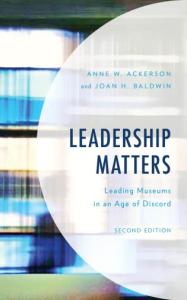
It’s been six years since we published Leadership Matters. When we wrote the original version, Anne Ackerson and I were concerned about the lack of attention paid to leadership in the museum field, particularly in history and cultural heritage organizations. There was a notion that through some office magic or, simply, inertia, individuals became leaders, and if they didn’t, mediocrity was fine; in fact, mediocrity was better than change. Little, if any, investment was made in human capital. You became a director and the rest was up to you. The motto was sink or swim, and not everybody looked graceful in the pool. What we learned, however, was leadership wasn’t some in-born trait, miraculously recognized by search committees. Instead, it was a commitment to self-awareness, authenticity, courage and vision, with an ongoing undercurrent of reflection and experimentation.
Now it’s 2019 and we’ve just published a new edition of Leadership Matters: Leading Museums in an Age of Discord. It’s curious, exciting, and remarkable how much things have changed in such a short time. In 2013, our concerns were internal: a field that was at best negligent about training and developing its leaders, failing to acknowledge that a content-driven education did not necessarily prepare an individual for coping with the foibles of a board and a staff or the public. Today, those concerns remain, but there are huge external pressures as well: rapid-fire communication, communities — from staff to stakeholders — who require a voice, especially those traditionally underserved or ignored, and need to see themselves somewhere inside a museum. Otherwise the work doesn’t matter because without community connection museums are just warehouses of things.
Today’s leaders still possess the four characteristics we identified in 2013: self-awareness, authenticity, courage and vision. That hasn’t changed, but the world has, and our nine new interviewees, LaTanya Autry, Cheryl Blackman, Karen Carter, Sean Kelly, Lisa Lee, Azuka MuMin, Franklin Vagnone, Hallie Winter, and Jorge Zamanillo, all approach their jobs from a different space. Gone are the days of sage-on-a-stage leadership. These leaders are collaborators, relationship builders, empathizers.
Both versions of Leadership Matters end with “10 Simple Truths,” common sense practices from all 36 interviewees about leadership:
- Get invested: As interviewee Christy Coleman wrote, “Museums are not neutral space. We may not be activists, but we’re not neutral. If your community is in crisis and you’re an institution that has the resources to add to that conversation to bring it out of crisis, you are failing if you’re not actively involved in the needs of your community.”
- Be a trust builder: Museums succeed on the relationships they build in their communities, on their staffs, on their boards. It’s that simple. Relationships matter. So do words. And deeds.
- Embrace the greater good: Leaders are the moral compass for their institutions. Don’t check your values at the door, bring them to work. Every day.
- Create a candid culture: Honesty underpins trust.
- Up your frequency: Listen, listen, listen, and remember to get out of your office and know who you serve. As interviewee Azuka MuMin puts it: “Leadership has taught me who I am as a person, vulnerable and exposed, and the better I know myself, the better I am able to lead.”
- Learn and grow together: Leadership is a process. It’s learning. Invest in your people whether they are board members, volunteers or staff, leaders or followers.
- Get integrated: Read widely, think across spectrums. Who or what adds to your institutional narrative?
- Tap your entire network: It’s not all about you. Growing a museum is about being open to possibility.
- Commit to leadership: Leadership matters. Invest in your staff, give them the tools to become leaders. Good leaders are problem solvers and collaborators. They’re also good followers.
- Be accountable: Take the heat. Move forward. Don’t play the blame game. You’re a leader for a reason.
For those of you who will be at the American Association of State and Local History (AASLH) annual meeting this week in Philadelphia, we will see you there. And if you’d like a copy of Leadership Matters: Leading Museums in an Age of Discord, we’d be happy to sign it for you, Thursday, August 29, from 3:00-4:00 pm at the Rowman & Littlefield booth in the Exhibit Hall. In the meantime, lead well, with courage, empathy, and vision. And if you see any of our interviewees in Philadelphia this week, be sure to stop and thank them.
Joan Baldwin & Anne Ackerson


